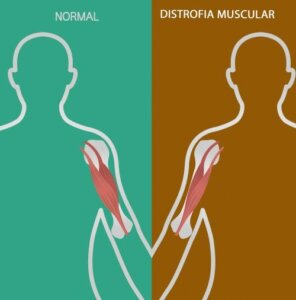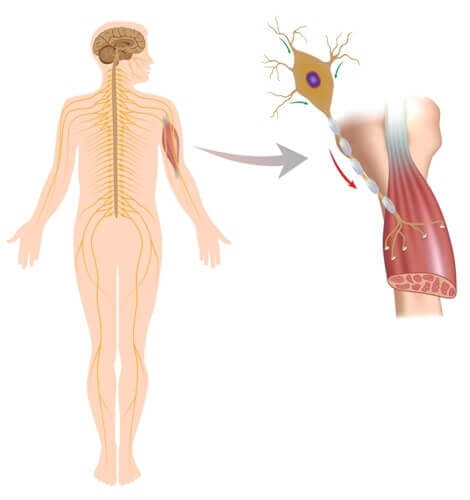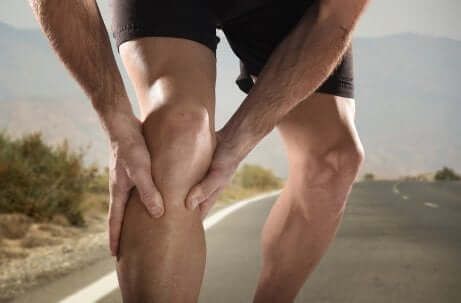Neuromuscular Disorders: Signs and Symptoms

Neuromuscular disorders are a group of diseases whose main characteristic is the loss of muscle strength. They’re chronic diseases that mostly have a genetic origin. Furthermore, these diseases cause loss of personal autonomy and psychosocial burdens.
Neuromuscular disorders can appear at any stage of life. However, about 50% of these diseases appear in childhood. They affect the muscles and the nervous system, and may affect the:
- Neuromuscular junction: where the nerve joins the muscle.
- Spinal motor neuron: these are the nerve cells that control the action of the muscles.
- Peripheral nerve: can affect the hands, arms, legs, neck, and face.
Causes and types of neuromuscular diseases

The causes of neuromuscular diseases are very different. In fact, in many of them scientists don’t know the cause yet. They can be classified according to their origin or their cause as genetic or acquired neuromuscular disorders.
Although the classification is changing as new data on their causes is uncovered, the main types of neuromuscular diseases are:
- Muscular dystrophies
- Distal myopathies
- Congenital myopathies
- Myotonic dystrophy
- Myotonia congenita
- Primary periodic paralysis
- Inflammatory muscle diseases
- Progressive myositis ossificans
- Metabolic myopathies
- Neuromuscular junction diseases
- Spinal muscular atrophy
- Hereditary neuropathies
Symptoms of neuromuscular diseases
Some of the symptoms common to many of the neuromuscular diseases are:
Gait disorder
Most neuromuscular diseases can show different gait disturbances. Some of these alterations are wobble, fatigue, asymmetry, claudication and walking on tiptoe. Wobble gait is usually a manifestation of pelvic girdle weakness due to atrophy of the gluteal musculature.
Read also: Muscle Cramps: What Causes Them and How Can you Treat them Naturally?
Frequent falls in neuromuscular disorders
This symptom occurs in neuromuscular diseases due to muscle weakness in the lower extremities. This occurs because patients lose strength to maintain balance, either due to fatigue or because they can’t use the muscles.
Difficulty going up and down stairs
Performing this action requires muscle strength from the buttocks and quadriceps. Frequently, the quadriceps become fatigued and suddenly collapse. In such cases, patients use the upper limbs to perform this action.
Muscle pain
The muscle pain that appears may or may not be linked to exercise. When muscle pain appears with an intensity greater than that of a lack of exercise, it’s a sign to consider in a physical examination with your doctor.
Difficulty standing up from the ground
This symptom usually accompanies the muscular weakness of the pelvic girdle, and it’s known as Gowers symptom. With this symptom, patients can’t stand up from the floor without resting their hands on the floor or on their legs. In this way, they climb to a standing position.
Cramps

In neuromuscular disorders, cramps manifest as painful muscle spasms or contractions.
Respiratory infections
Frequent and prolonged respiratory infections are due to weakness in coughing and keeping the airways clear. For this reason, breathing ability decreases and patients may even experience respiratory failure.
Sleep disorders
As a result of restrictions in breathing, patients can awaken often in the night, which can cause feelings of suffocation and tiredness throughout the day.
You may also be interested in: How to Do Breathing Exercises to Improve Sleep
Signs associated with various neuromuscular disorders
In a physical examination of patients suffering from this type of disease, a doctor might find signs such as:
- Amyotrophy: this is due to the poor development of muscle mass or its wasting away.
- Muscle weakness: lack of strength is the characteristic sign of diseases that affect motor skills.
- Low height or weight: some neuromuscular diseases are characterized by difficulties in growth.
- Changes in the skin: such as purple lesions on the eyelids. Calcinosis also appears, caused by calcium deposits. However, calcinosis manifests as nodules under the skin on the knuckles of the hands. At other times, keloids appear, sometimes even spontaneously.
- Progressive joint contractions: Contractions will always occur in those joints where there’s muscle weakness and asymmetry between the antagonistic muscle groups.
All cited sources were thoroughly reviewed by our team to ensure their quality, reliability, currency, and validity. The bibliography of this article was considered reliable and of academic or scientific accuracy.
- Febrer, A. (2014). Enfermedades neuromusculares. In Rehabilitación domiciliaria. https://doi.org/10.1016/b978-84-458-2583-9.00016-4
- Masdeu, M. J., & Ferrer, A. (2003). Función de los músculos respiratorios en las enfermedades neuromusculares. Archivos de Bronconeumologia. https://doi.org/10.1157/13045953
- Motoneurona, E. D. E. L. A. (2004). Grupo de Estudio de Enfermedades Neuromusculares Sociedad Española de Neurología. Historia.
This text is provided for informational purposes only and does not replace consultation with a professional. If in doubt, consult your specialist.








